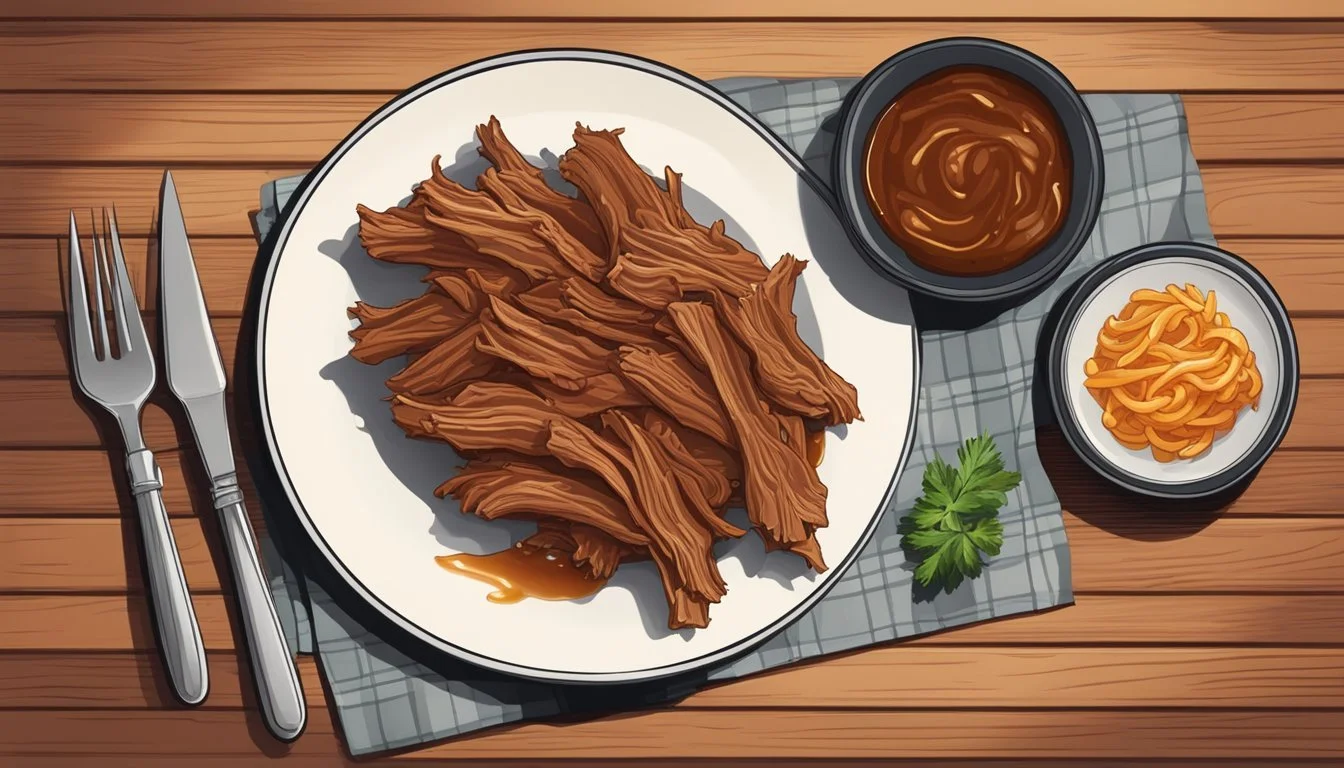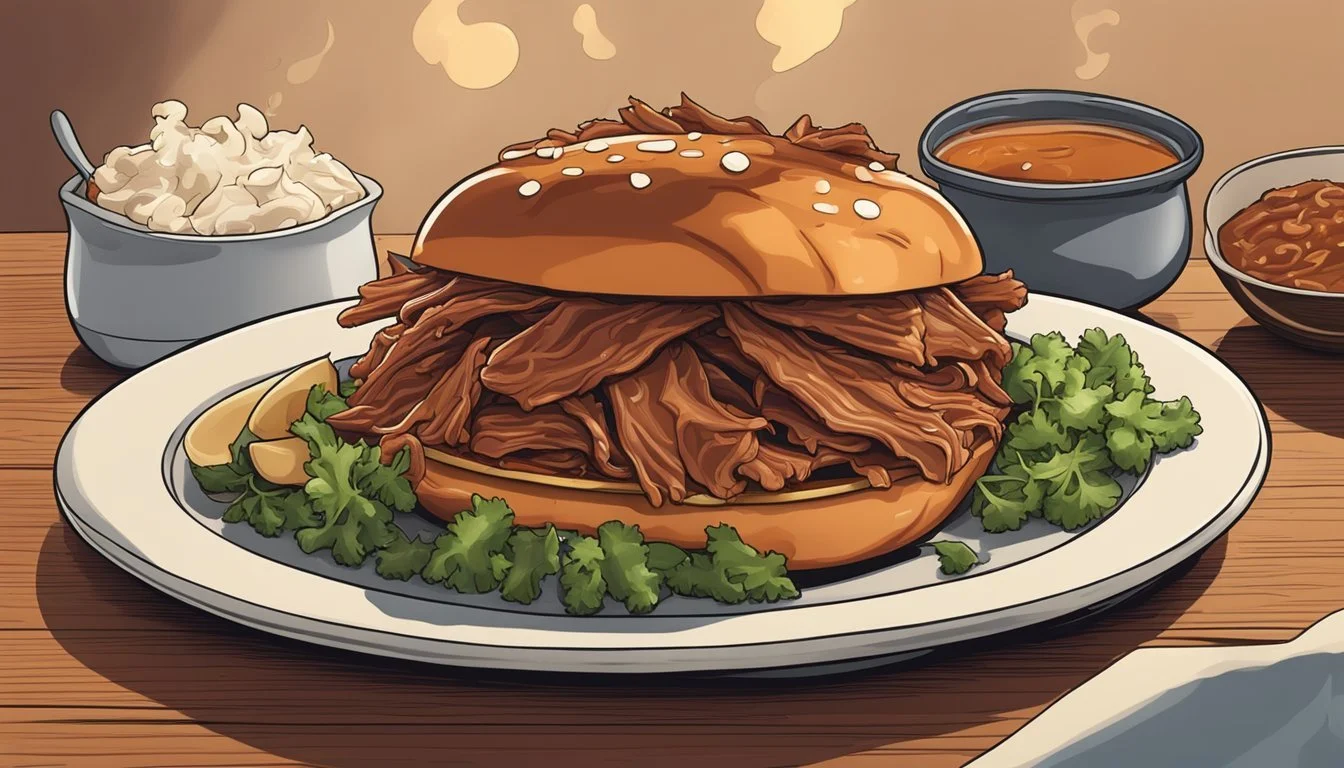How Long Does BBQ Pulled Pork Last?
Essential Storage Tips
Everyone loves the mouthwatering taste of BBQ pulled pork, but knowing how long it lasts can be crucial for food safety and meal planning. BBQ pulled pork needs to be refrigerated within 2 hours of cooking to prevent bacteria growth. Properly stored, pulled pork can last in the fridge for up to 3 to 4 days.
This means that for those big family gatherings or meal-prepping sessions, there's a reliable window to enjoy those delicious leftovers without worry. If you have more than you can eat within that time frame, freezing it is a great option. Pulled pork can maintain its quality in the freezer for up to three months, making it a convenient choice for future meals.
Understanding these storage guidelines helps keep your barbecue experience enjoyable and safe. No one wants their prized dish to go to waste or, worse, become a health risk. So, with a bit of attention to timing and storage, you can savor every bite of your BBQ efforts.
Understanding Pulled Pork and Its Preservation Needs
Knowing how to preserve pulled pork correctly ensures it remains flavorful and safe to eat. This involves understanding the basics of pulled pork and the factors that influence its freshness over time.
The Basics of Pulled Pork
Pulled pork is typically made from cuts like the pork shoulder, pork butt, or Boston butt. These cuts are slow-cooked until the meat becomes tender and juicy, allowing it to be easily shredded. The traditional cooking methods often include smoking or slow roasting, which helps in developing a deep, rich flavor.
Key Points:
Pulled pork is usually made from pork shoulder or pork butt.
Cooking methods like smoking or slow roasting enhance its tenderness and flavor.
Properly cooked pulled pork is juicy and has a rich, smoky flavor.
Factors Affecting Pulled Pork Freshness
Several factors can affect how long pulled pork stays fresh:
Storage Temperature: Pulled pork should be refrigerated within two hours of cooking to prevent bacterial growth. Ensure the refrigerator is set to 40°F (4°C) or below.
Packaging: Store pulled pork in airtight containers or vacuum-sealed bags. This minimizes air exposure, which can dry out the meat and affect the flavor.
Time in Fridge: Pulled pork can be safely stored in the refrigerator for up to 4 days. If you plan to keep it longer, consider freezing it. When frozen, it maintains quality for up to three months.
Handling Before Storing: Rapid cooling of pulled pork before refrigeration preserves its freshness. Let it cool slightly, then refrigerate promptly to avoid bacterial growth.
Key Points:
Refrigerate within two hours after cooking.
Use airtight containers or vacuum-sealed bags.
Store in the fridge for up to 4 days, and freeze for longer-term storage.
Cool the meat rapidly before storing to maintain freshness.
By following these guidelines, you can extend the shelf life of your pulled pork while keeping it flavorful and safe to consume.
Proper Storage Techniques
Properly storing pulled pork is essential to maintain its flavor and safety. This section explores the best practices for refrigeration and freezing.
Refrigeration Best Practices
To store pulled pork in the refrigerator, it should be placed into airtight containers or wrapped tightly in aluminum foil. This minimizes air exposure and preserves moisture. According to the USDA, pulled pork should be kept at or below 40°F (4°C) and consumed within 4 days.
It's crucial to place the pulled pork in the refrigerator within 2 hours after cooking to prevent bacterial growth. Labeling the container with the date ensures the meat is used within its safe storage period. A probe thermometer can be used to verify the internal temperature when reheating.
Freezing for Longevity
For extended storage, freezing pulled pork is recommended. It should be kept in vacuum-sealed bags or airtight containers to reduce air exposure. Properly stored pulled pork can last up to 3 months in the freezer.
Before freezing, allow the pulled pork to cool completely. Labeling bags with the freezing date helps keep track of storage duration. When reheating, ensure the internal temperature reaches 165°F (74°C) to maintain safety. Using a vacuum sealer can extend the meat's shelf life and help maintain its flavor and texture.
Safety and Quality Considerations
Ensuring the safety and quality of BBQ pulled pork involves understanding the signs of spoilage and adhering to food safety guidelines. By being vigilant, one can prevent foodborne illnesses and enjoy the dish safely.
Detecting Spoilage in Pulled Pork
Spotting signs of spoilage in pulled pork is crucial. Spoiled meat can be identified by a rancid smell or a change in color, often turning gray or green. Mold growth, which appears as fuzzy patches, is a clear indicator that the pork is no longer safe to eat.
Additionally, a slimy texture on the surface signals bacterial growth. Leftover pulled pork should always be discarded if there are any doubts about its freshness to avoid potential food poisoning.
Food Safety Guidelines
To store pulled pork safely, follow the USDA guidelines. Cooked pulled pork should be refrigerated within two hours of cooking to prevent it from entering the danger zone (40°F - 140°F), where harmful bacteria thrive. If properly stored in an airtight container, pulled pork can last up to four days in the fridge.
For extended storage, freezing is a good option. When frozen, pulled pork can be safe indefinitely, but for the best quality, it should be consumed within four to twelve months. Always reheat leftovers to an internal temperature of 165°F to kill any residual bacteria and ensure safety.
Maximizing the Shelf Life of Pulled Pork
Proper storage of pulled pork ensures its safety and preserves its flavor. Key methods include maintaining the right temperature and using appropriate packaging techniques.
Refrigerator Storage Lifespan
Pulled pork can last in the refrigerator for up to 4 days if stored at or below 40°F (4°C), according to the USDA. To maximize longevity, refrigerate the meat within 2 hours of cooking to prevent bacterial growth.
Store the pork in airtight containers or wrap it tightly in aluminum foil to minimize exposure to air and moisture. Vacuum-sealing can extend the lifespan up to 1-2 weeks, as it significantly reduces air exposure. Avoid adding too much liquid to the container, as this can promote bacterial growth and spoilage.
Freezer Storage Duration
When freezing pulled pork, temperature control is crucial. Pulled pork can be frozen for up to 3 months without compromising quality. However, if it remains in the freezer longer, it may still be safe to eat but could suffer from freezer burn, which affects texture and taste.
Use heavy-duty freezer bags or vacuum-seal the meat to prevent freezer burn. Ensure that the freezer is consistently at 0°F (-18°C) or below. Label the packages with dates to keep track of storage times. By following these methods, the pulled pork's shelf life can be maximized effectively in both the refrigerator and freezer.
Preparation and Usage Tips
Proper preparation and inventive ideas for using leftover BBQ pulled pork can enhance the flavors and extend the enjoyment of this dish. Thawing and reheating processes, along with creative recipes, play key roles in maximizing its potential.
Thawing and Reheating
To maintain freshness and flavor, thawing pulled pork should be done in the refrigerator overnight. Avoid leaving it on the counter as it can lead to bacterial growth. For faster thawing, place it in a sealed bag and submerge in cold water, changing the water every 30 minutes.
Reheating pulled pork can be done in several ways. In the microwave, use a microwave-safe dish and cover it, reheating in 1-minute intervals and stirring in between to ensure even heating. For richer flavors, using a slow cooker is recommended. Set it on low for a few hours or until heated through. To retain moisture, add a bit of water or chicken broth. Another option is grilling on low heat or using an oven preheated to 250°F until hot.
Creative Uses for Leftovers
Leftover BBQ pulled pork offers endless possibilities. For a quick meal, pulled pork tacos are an excellent choice. Simply reheat the pork, place it in tortillas, and top with salsa, chopped onions, and cilantro.
Pulled pork pizza is another delicious option. Spread BBQ sauce on a pizza crust, add the pulled pork, cheese, and other toppings like onions or peppers. Bake until the cheese melts and the crust is crispy.
For a comforting dish, consider pulled pork mac and cheese. Incorporate the pork into your macaroni and cheese recipe, blending it thoroughly before baking to add a smoky depth of flavor. It also makes a great addition to soups; simply mix the pork into vegetable or bean soups to enhance the taste.
Using individual portions for reheating can prevent waste and ensure each serving remains moist and flavorful. Transforming leftovers into sandwiches with coleslaw or using as a topping for salads can also refresh the dish.
Frequently Asked Questions
How long can pulled pork stay out at room temperature?
Pulled pork should not be left out at room temperature for more than 2 hours. After this period, it can become a breeding ground for harmful bacteria.
How long does BBQ pulled pork last in the fridge?
BBQ pulled pork can be safely stored in the refrigerator for up to 4 days at a temperature of 40°F (4°C) or below, according to the USDA.
Can you eat spoiled pulled pork?
Eating spoiled pulled pork can lead to food poisoning due to the presence of food-borne bacteria. Always check for signs of spoilage, such as off smells or changes in texture and color, before consuming.
How should leftover pulled pork be stored?
Leftover pulled pork should be refrigerated within 2 hours of cooking. Ensure it is stored in airtight containers to minimize air exposure and maintain freshness.
Can leftover pulled pork be frozen?
Yes, leftover pulled pork can be frozen. For best results, vacuum-seal or tightly wrap it in freezer-safe bags or containers. Frozen pulled pork can last for 2-3 months.
What are the signs of spoiled pulled pork?
Common signs include a sour or off smell, slimy texture, and any visible mold. If any of these signs are present, the pork should be discarded.
What temperature should pulled pork be stored at?
The USDA recommends storing pulled pork at a refrigerator temperature of 40°F (4°C) or below to ensure safety and prevent bacterial growth.
Can you reheat pulled pork?
Yes, pulled pork can be reheated. Ensure it reaches an internal temperature of at least 165°F (74°C) to eliminate any potential bacteria.





